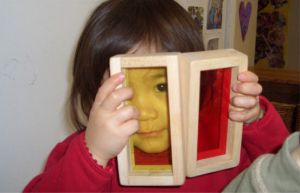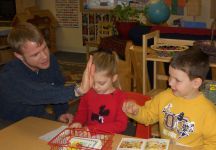
North Wall’s philosophy is to encourage students to develop to their full potential intellectually, physically, spiritually, socially, and emotionally. Further, we believe in developing a student’s sensitivity toward others, a positive self-concept, and higher level thinking skills while teaching basic skills and knowledge.
Christian values are modeled, emphasizing that God made each person unique and worthwhile. The major theme of the program is LOVE. We are totally committed to demonstrating unconditional love to students as Christ has demonstrated to us. North Wall is not related to any church, and we refrain from teaching a particular doctrine.
Positive discipline is used exclusively at North Wall. The staff model respectful, loving behavior and expect the same from the children. The children are encouraged to show kindness and consideration to each other. Each child is expected to be responsible for his/her own actions.
The desired outcome for the children who attend North Wall is to be positive members of our community and to become well-educated, loving, and respectful members of the world community.
Goals
- To demonstrate unconditional love to students
- To provide an academically strong and intellectually challenging curriculum
- To provide positive individual guidance for student behavior
- To teach to multiple intelligences and various learning styles
Mission Statement

Our mission is to provide the highest quality of education possible in a loving Christian atmosphere. We believe in helping students to develop their full potential individually and as a cooperative team socially, emotionally, physically, intellectually, and spiritually. The desired outcome for students who attend North Wall Schools is to be positive members of our community and to become well-educated, loving, and respectful members of the world community.
N NURTURING
W WONDER
A AND
L LIFELONG
L LEARNING
Multi-Age

We are fully committed to meeting the individual needs of each student and are convinced that multi-age grouping is one of the aspects of our program that lends itself to this goal. Teachers are aware of students’ differences and individualize curriculum accordingly. Having a range of abilities, interests, and temperaments within a classroom facilitates children’s natural, uneven development.
North Wall has done multi-age grouping successfully for almost forty years, and one of the many benefits we have observed is the advanced learning of all of the students. Students of varying ages and abilities approach problems differently, and interacting with each other stimulates mental growth. The students thrive both intellectually and socially.
In a multi-age classroom, students plan together, help each other, and discover ways to settle conflicts together, and they become critical thinkers, decision makers, and problem solvers. Because they have the experience of working in cooperative groups, they are able to relate very well to one another and to the outside world.
The students treat each other with respect and care for each other somewhat like siblings in a family. These sibling-like relationships become a source of affection, comfort, and closeness for all of the students.
Some research has shown that children in a multi-age setting seem to have a more positive attitude and are happier about school. This may be attributed to the success they experience in the classroom, the feeling of belonging to a caring community of learners, and the security of knowing what to expect from year to year.
Other benefits that may be attributed to multi-age groupings are:
- Fewer transitions for students and teachers
- Increased stability for students as a result of continued classroom routine
Positive Discipline

GUIDELINES FOR APPROPRIATE INTERACTIONS WITH OTHERS:
- Show respect and consideration to others.
- Show respect and consideration to yourself.
- Show respect and consideration to the environment.
POSITIVE DISCIPLINE GUIDELINES:
- The teacher practices positive discipline daily with all children, reinforcing positive behavior and applying immediate natural consequences to misbehavior in an individual, quiet, non-threatening and non-humiliating way.
- The teacher informs the administration when a pattern of mis-behavior begins to occur.
- The teacher documents the behavior for a week or two looking for patterns, strategies, solutions, etc. and coming up with a Positive Behavior Plan with the assistance of the Individual Needs Coordinator.
- The teacher meets with family and the administrator offering a Positive Behavior Plan for the student including a specific desired outcome or target behavior and specific rewards for reaching goals. This plan is administered for 3-4 weeks by both the teacher and the parents.
- The teacher, the administrator and family meet again in approximately one month to discuss the outcome.
- During this process, the family is expected to obtain the help their child needs outside of the resources of the school, such as assessment, counseling, or therapy, to support the successful participation of the student at school.
- When there is a diagnosis which indicates that ongoing intervention will be needed, the school expects to receive ongoing written reports from the specialist on a monthly basis.
SAFETY CONCERNS:
If a student is a threat to the safety or well-being of others, the family will be asked to pick up their child from school and keep their child home the following day, or perhaps longer. During that time, the family is expected to find the outside support needed to help their child succeed when returning to school.
